The footpath is the main location for street furniture such as benches, café seating, rubbish and recycling bins, cycle parking stands, etc. Some furniture is designed specifically for pedestrians and enhances the pedestrian environment, while other furniture is provided mainly for other road users.
Furniture is essential for creating quality pedestrian environments and support the use of the public realm. However, if not designed, located and maintained correctly it can also create obstructions and trip hazards, obscure visibility and be intimidating to pedestrians. Placement of furniture should also consider shade, outlook and proximity to main entrances of buildings.
Furniture must be located outside the footpath through zone. It can be located within the street furniture zone (as described in the Footpath design - principles guidance) or in space such as parklets, kerb buildouts or other public space. Crime Prevention through Environmental Design (CPTED) principles must be considered to ensure the furniture does not block sightlines or cause entrapment situations.
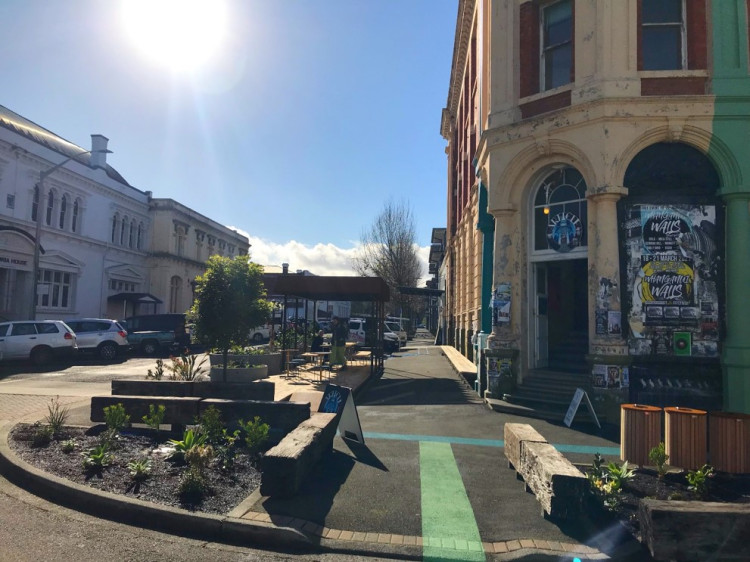
Furniture located outside the footpath through zone, Whanganui (Source: Innovating streets case study Drews Ave Arts Quarter)
Every piece and type of furniture should be easily detectable (and avoidable) by the vision impaired. The consistency and legibility of this means each piece and type of furniture should:
PNG: Footpath design – principles
Aotearoa Urban Street Planning and Design Guide
Street furniture design should be sympathetic to the surrounding pedestrian environment and the needs of people of all ages, abilities and backgrounds. For example, benches should have backs and armrests, although if there are multiple benches in a location not all need these features. Armrests make it easier or possible for people with mobility impairments to stand up.
There should be a good colour contrast between street furniture and background surfaces to ensure it is conspicuous to all, particularly the vision impaired. Generally, grey colours should be avoided as they blend into the general background.
The table below shows the typical characteristics and conventional locations of common street furniture[1]. This table offers guidance particularly relevant to pedestrian needs; for further design guidance refer to the Aotearoa urban street planning and design guide and any local urban design guidelines.
![]()
Table: Typical characteristics of street furniture [PDF, 158 KB]
Aotearoa Urban Street Planning and Design Guide
The following photos show examples of street furniture and its placement.
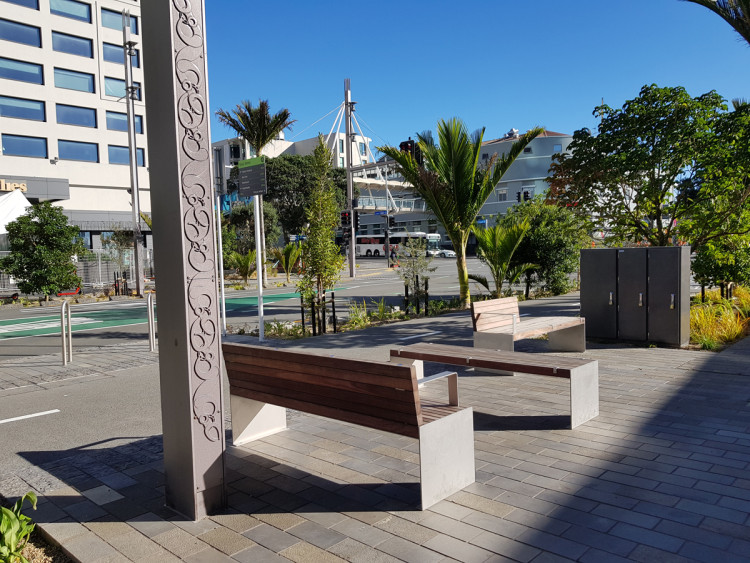
Benches should have backs and armrests for the comfort of pedestrians, particularly less mobile or older pedestrians who need to push themselves up from the seat, Quay Street, Auckland. (Photo: Gemma Dioni)
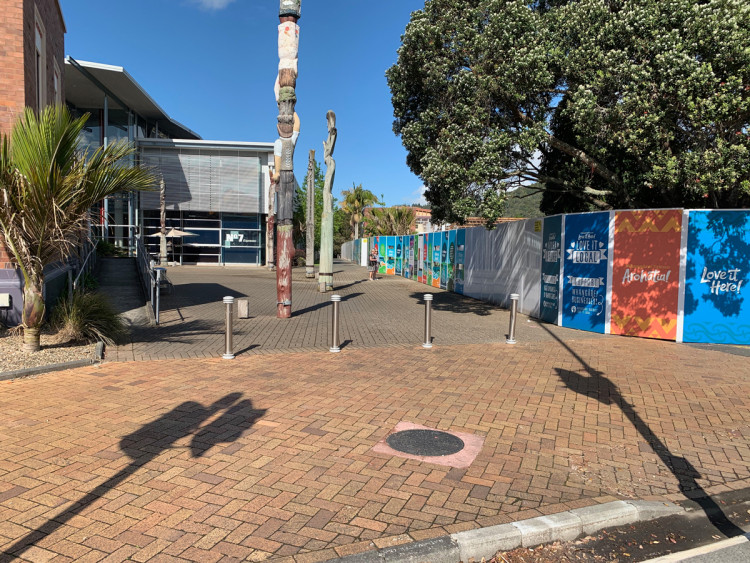
Lit bollards demarcate a pedestrian plaza and prevent vehicle access, Whangārei. (Photo: John Lieswyn)
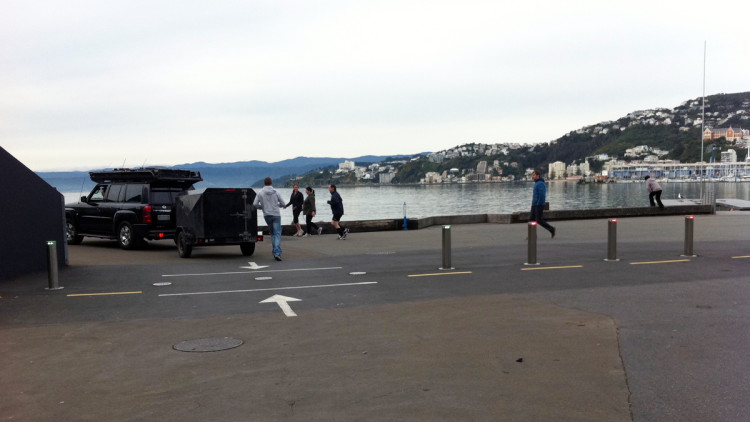
Lighted retractable bollards protect the waterfront path, Wellington. (Photo: John Lieswyn)
 A drinking fountain with bottle filling, different heights for children, adults and dogs, and permeable concrete footing. (Photo: Jeanette Ward)
A drinking fountain with bottle filling, different heights for children, adults and dogs, and permeable concrete footing. (Photo: Jeanette Ward)
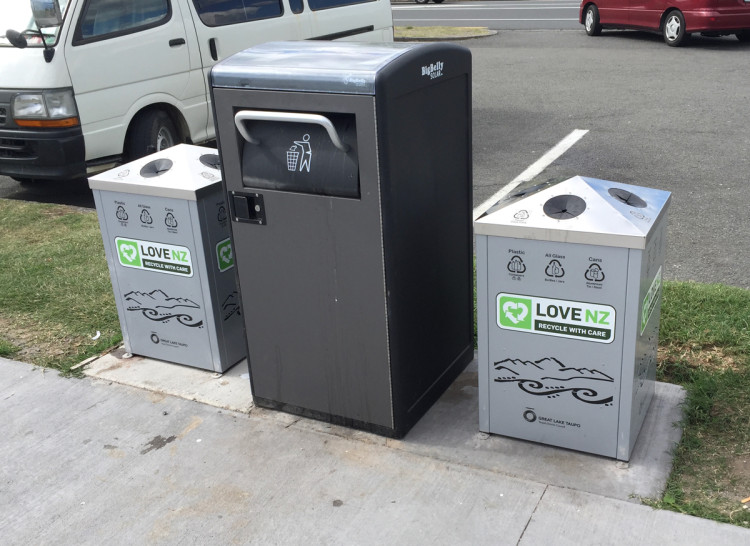
Recycling bins and solar-powered rubbish compactor out of the path movement area, Taupō. (Photo: John Lieswyn)
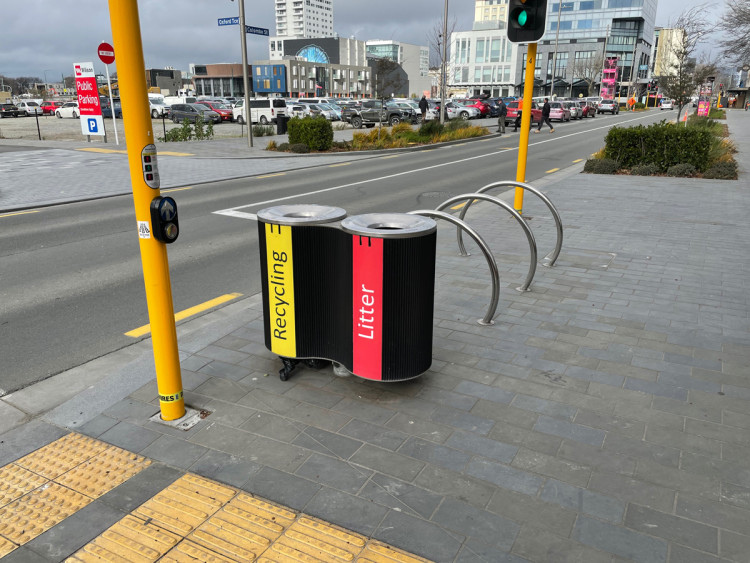
Separate rubbish and recycling bins and hoop type cycle stands in street furniture zone, Colombo Street, Christchurch. (Photo: John Lieswyn)
Street trading and advertising signs, should be placed outside the footpath through zone. Street trading typically involves tables and seating on the street to provide outdoor dining. It is important to note that the use of path space may change over the day and night to support the activities occurring at those times.
Street trading and advertising should be located either in the frontage zone or street furniture zone or in other spaces such as parklets. Ideally advertising signs should be consistently placed along a street, placement of hazardous items should be banned, and rules on the placement of these signs enforced.
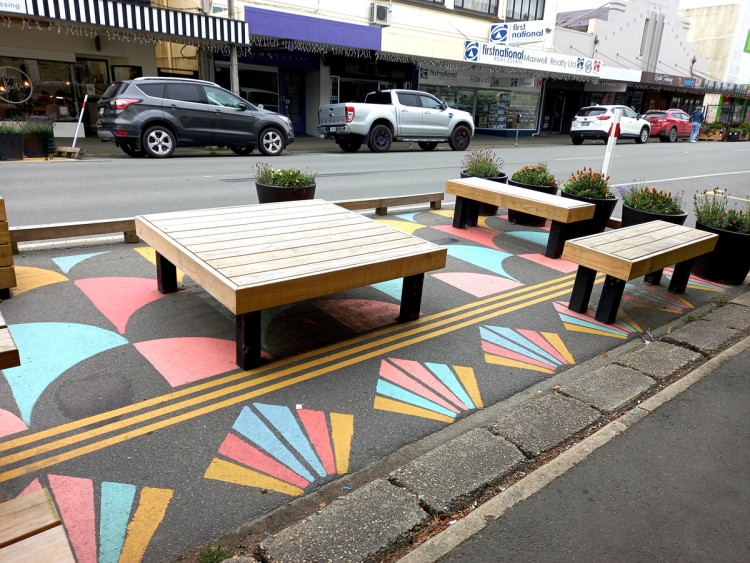
Parklet provides extra space adjacent to the footpath, Irk Street, Gore. (Photo: Jeanette Ward)
The boundary of street trading space can be demarcated with plaques or by movable elements such as semi-permanent planters. The advantage of relocatable elements is that the use of the public space can be adapted with changes in hospitality providers and license conditions.
Large poster bollards need to be placed clearly to ensure they do not block crossing visibility; a poor example and good example are shown below.
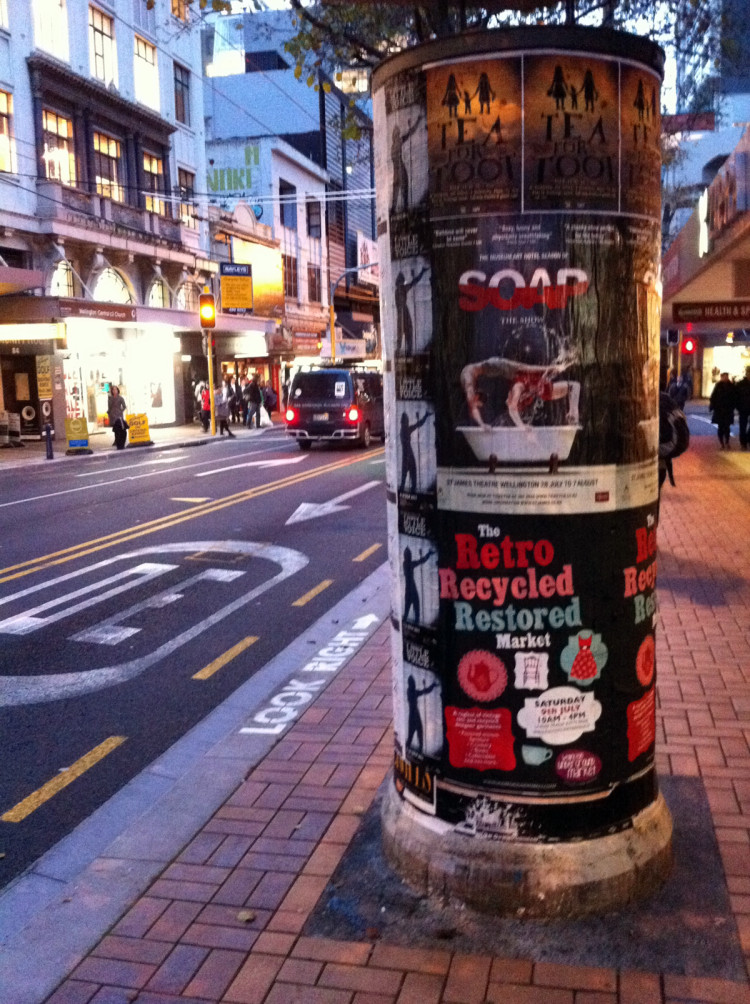
An advertising pillar obscures visibility and was a contributing factor in a pedestrian death, Wellington. (Photo: John Lieswyn)
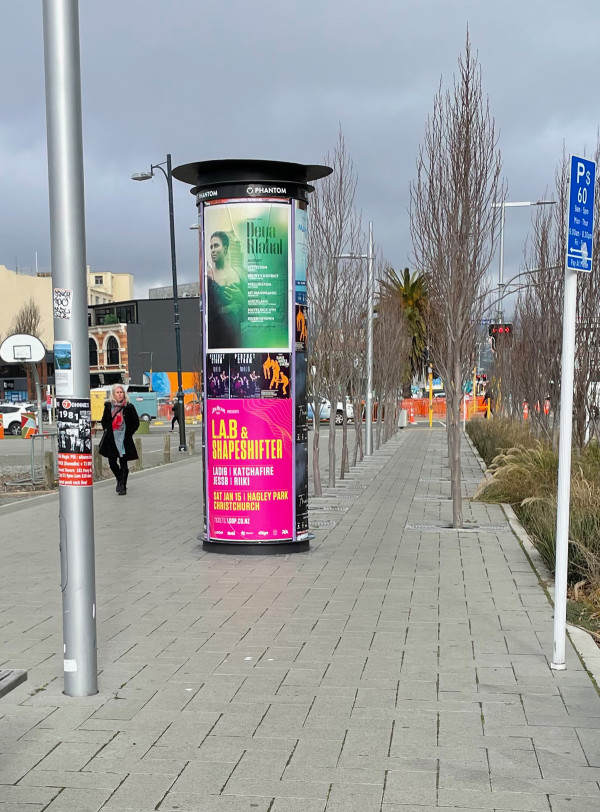 An appropriately sited advertising pillar does not impede driver/pedestrian intervisibility, Manchester Street, Christchurch. (Photo: John Lieswyn)
An appropriately sited advertising pillar does not impede driver/pedestrian intervisibility, Manchester Street, Christchurch. (Photo: John Lieswyn)
In very constrained environments, there may not be enough space in the furniture or frontage zones for the street to be safe and function efficiently for pedestrian users. Firstly, consider whether the street furniture is necessary in this location. Where street furniture must be sited along the edge of the through route, it is important to:
The creation of kerb buildouts or parklets within the parking lane can help accommodate seating areas that cannot be located in the path area.
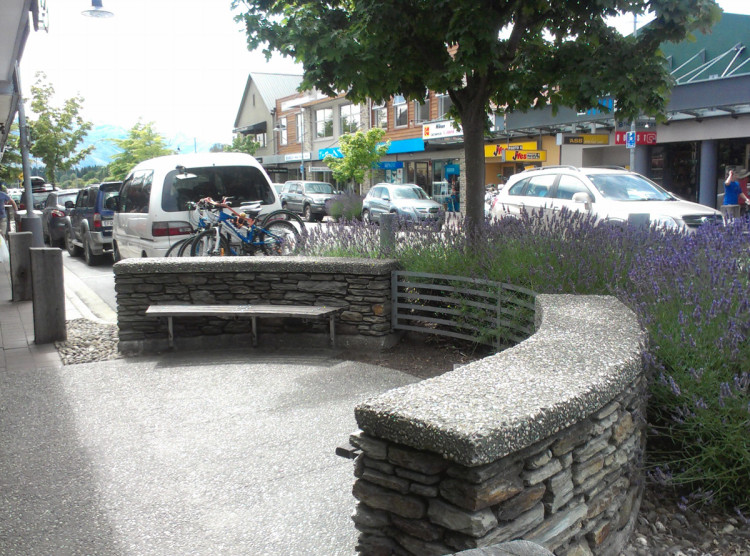
Public seating and landscaping as part of a buildout into the amenity / parking zone. (Photo: Jeanette Ward)